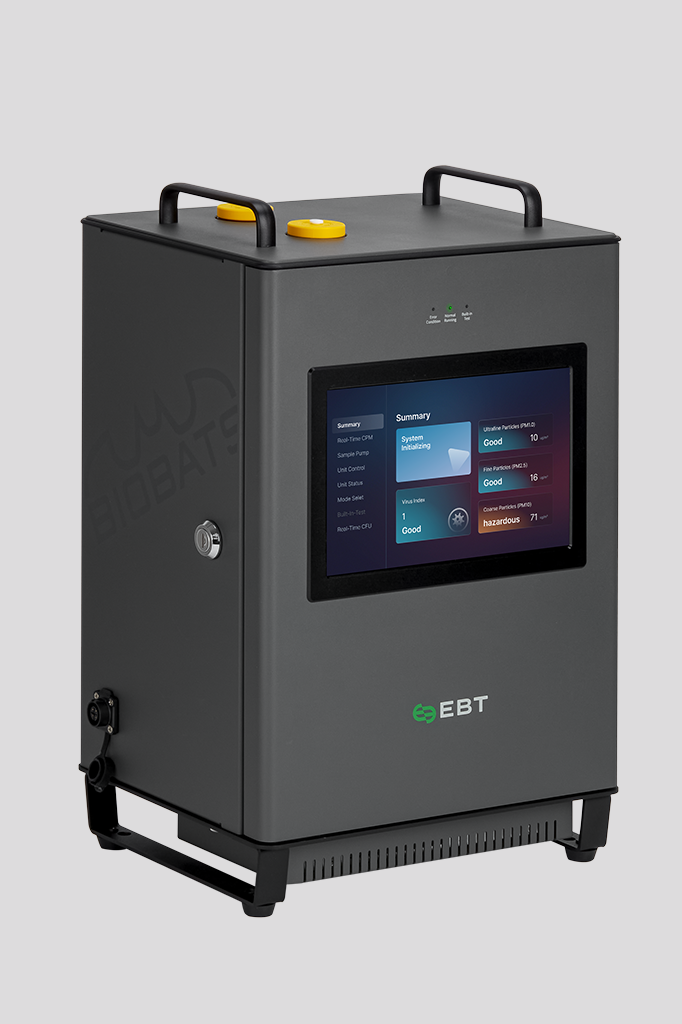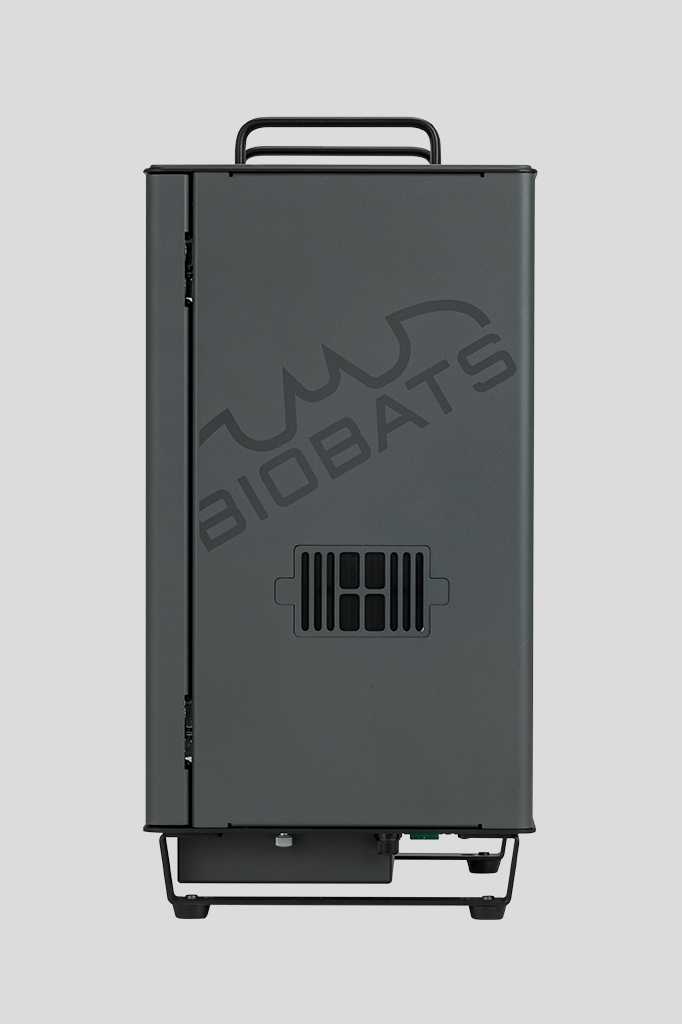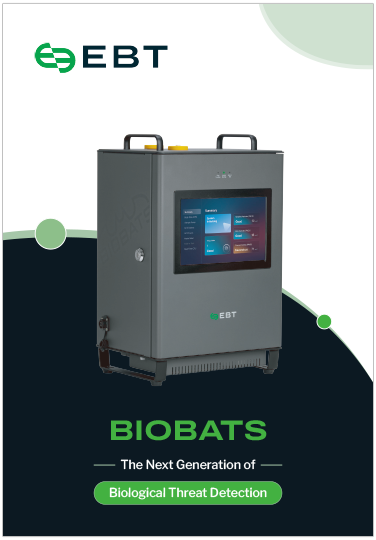BIOBATS
Smart Biological Detection & Early Warning System
Smart Biological Detection & Early Warning System
WHAT IS BIOBATS?
BioBats quickly detects the presence of airborne viruses
and biological organisms such as bacteria and delivers
detected information to users to warn them to recognize
the condition of the site. After detection/warning, the
biological material is automatically collected in the disposable
cassette filter installed in the system, and it is commissioned
to a professional PCR analysis agency to enable
accurate identification. In addition, the data from detection/
warning is automatically saved to a remote server,
which can be used for statistical analysis as well as the
chain of transmission, significantly reducing the spread of
biological infectious diseases.
The key features of the BioBats are aerodynamic cyclones,
laminar flow formation and transmission, high-sensitivity
fluorescence measurement and signal processing, biological
material capture and air quality measurement technologies.
The high-sensitivity fluorescence measurement and the
signal processor mounted on the BioBats system allow the
detection of living organisms and measurement technology
for fine dusts of 1.0, 2.5, 10μm. By combining the detection
capability and measurement technology together, the
number of failures in detection and warning can be significantly
decreased, resulting increase of the liability of the
system. EBT is confident that we will contribute to helping
people to live in a safer space not only now but also in the
future.
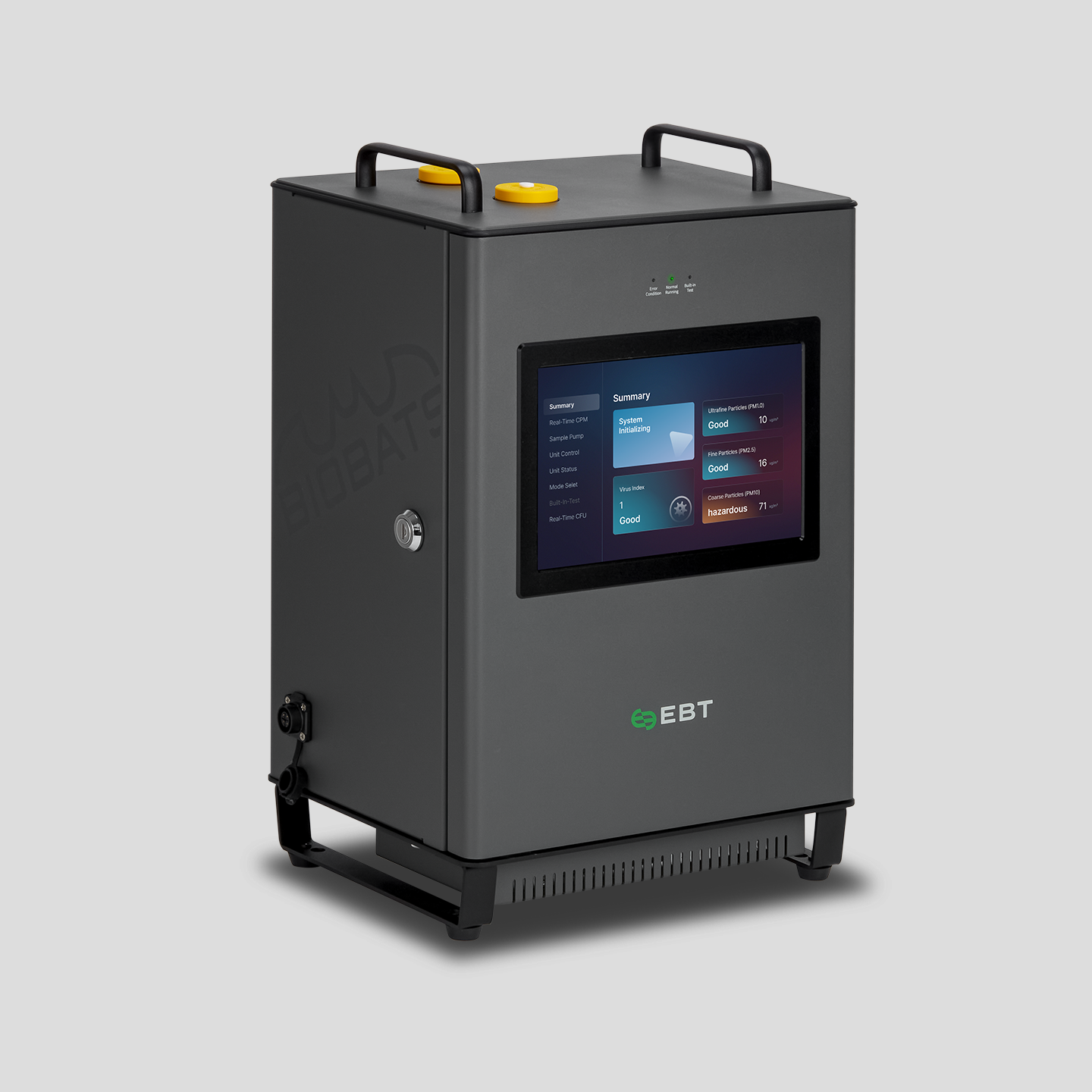
Aerodynamic sample concentration technology
Particles in a circular motion use the fact that heavy particles move to the outer edge and light particles move to the center by centrifugal force. This is a technology that selects and concen trates only the distribution of particles of a specific size, keeping the distribution of particles constant. To do this, the pump speed must be kept constant.
Sample transfer technology using laminar flow
It is a technology that accurately moves sample particles to the designated position, and it is
necessary to accurately collide the particles with the laser of the fluorescence measurement.
Laminar flow must be generated by adjusting the speed of the pump so that the inside of the
fluorescence measurement is not polluted and turbulent flow is not generated.
The velocity of a fluid can be measured using a point proportional to the difference in pressure.
High-sensitivity fluorescence measurement & signal processing technology
Reduced use of lenses to minimize system size
Structural design to make the detector as close to the light source as possible to maximize
measurement efficiency
Analysis of wide distribution of particles ranging in size from 0.3 to 10 ㎛ using multiple detec
tors to maximize measurement efficiency
Determining the presence of a wide range of biological substances by measuring fluorescence
signals with wavelengths of 430 to 470 nm
System
Configuration
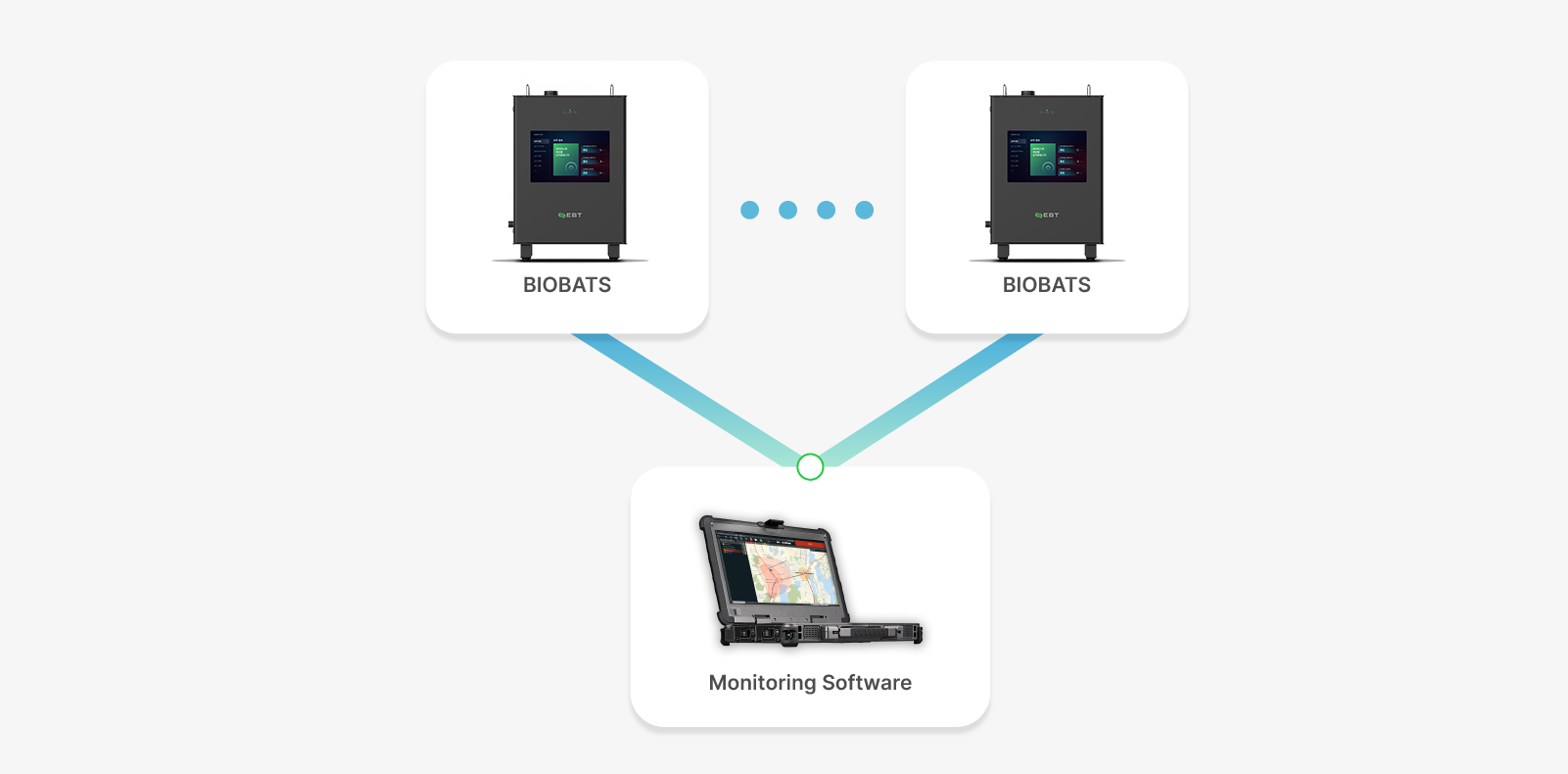
Specification
Air Collection
Collection air volume
10L/Minute
Particle size
0.3 ~ 10um
Particle concentration ratio
More than 10times
Measurement
Measurement method
Fluorescence
Light Source
405nm CW Laser 80mW
Sensor
Semiconductor optical sensor 10^6 A/W sensitivity
Measurement wavelength
450~650nm emission
Detection Limit
100 ACPLA
Classification
Virus, Bacteria
Physical Considerations
Communication
Ethernet, Wi-Fi, Bluetooth
Display
10” touch screen display
Power
External 110 / 220 vac
Size
W339 x H510 x D250 mm
Weight
Approx. 12.5kg
